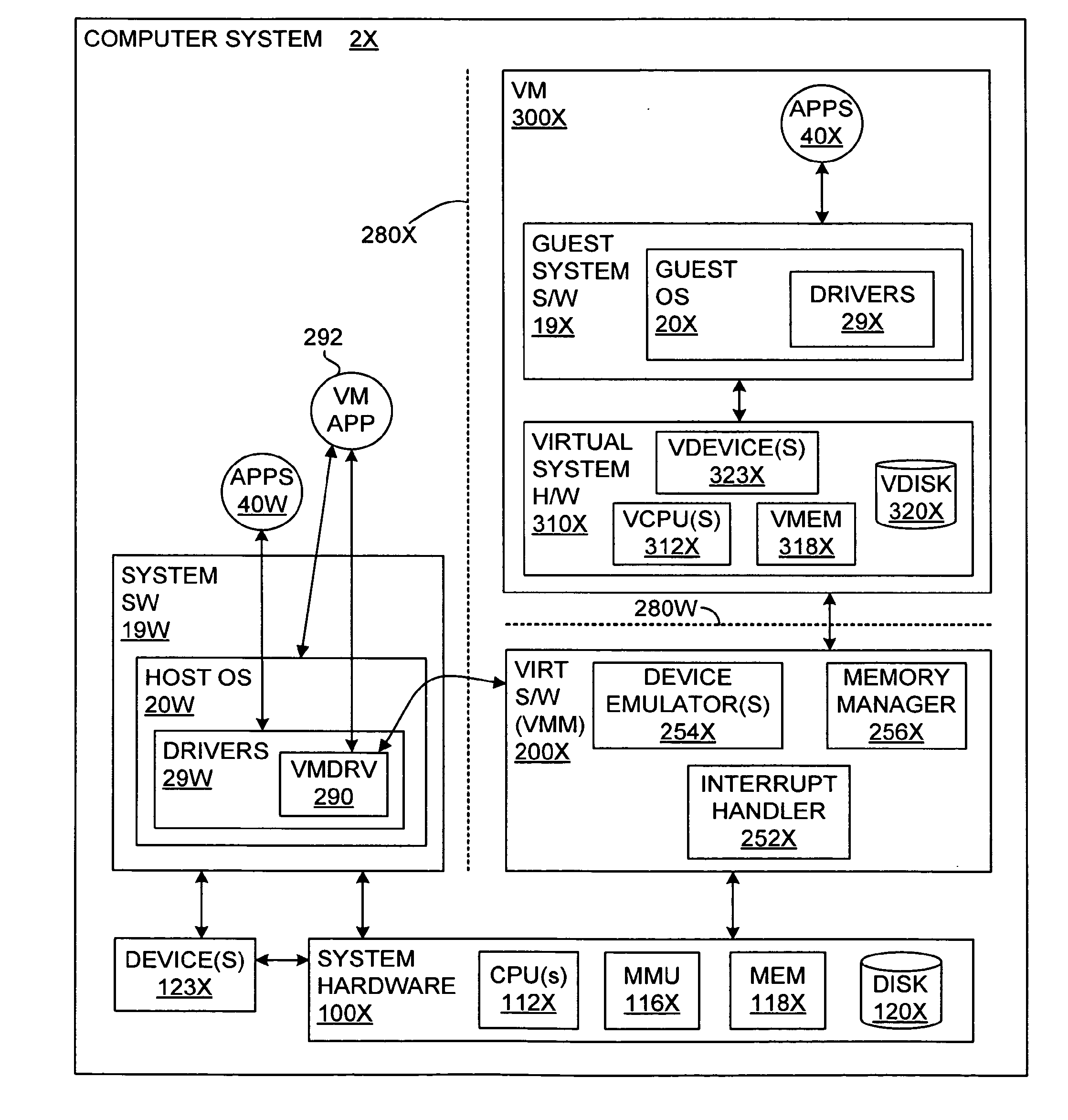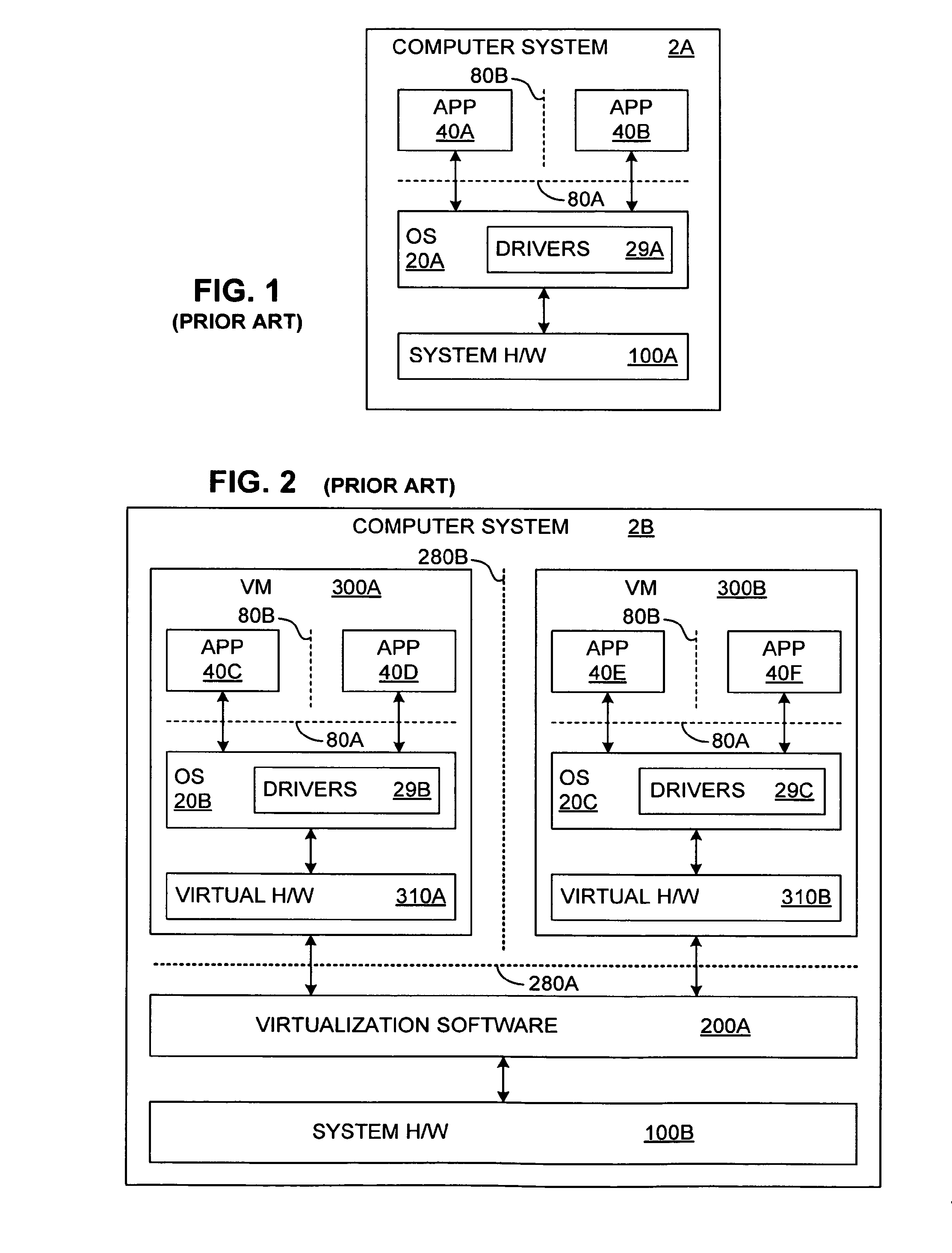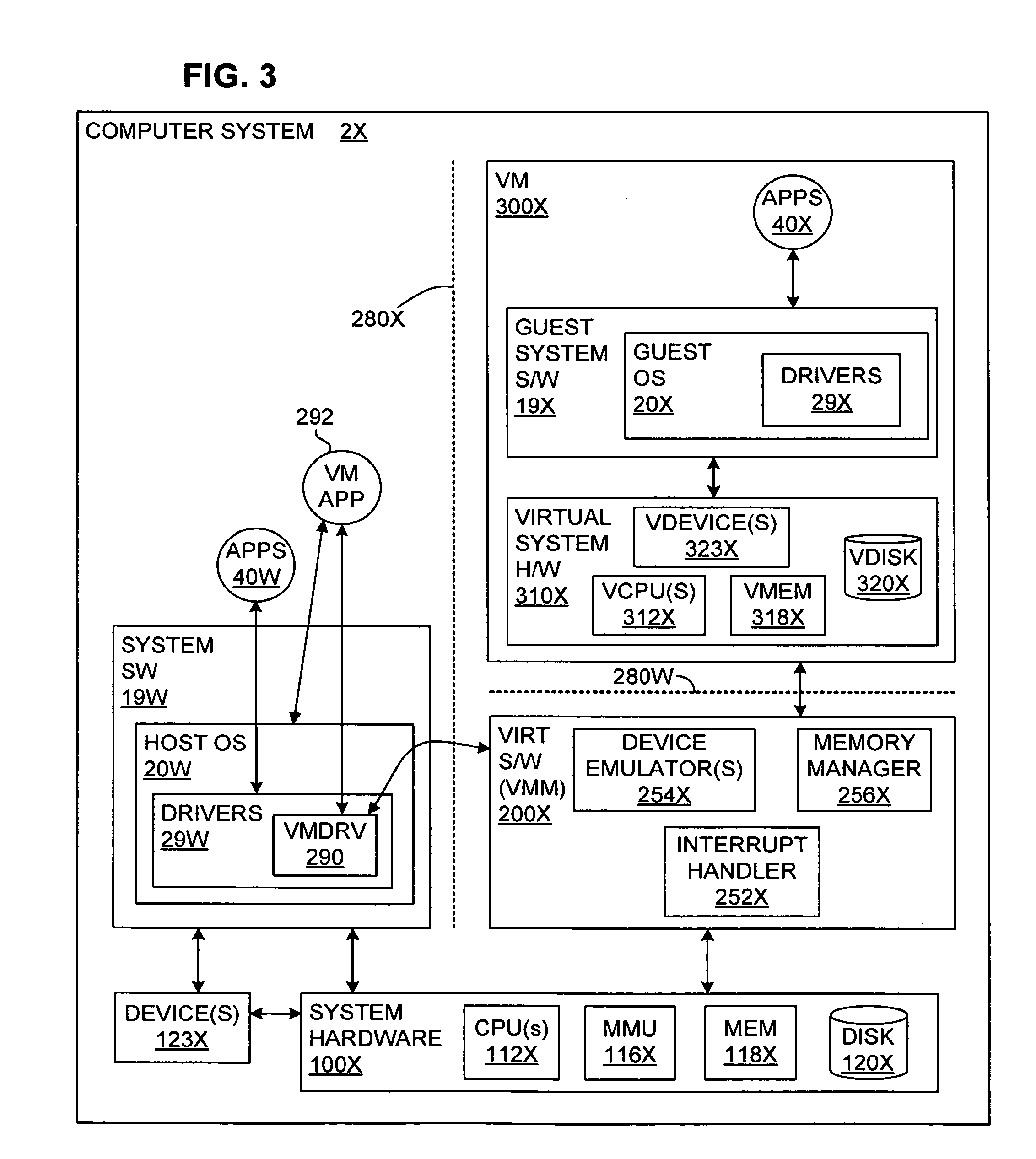Early computer systems could execute multiple software programs, but they could only execute one program at a time.
The Windows and Linux OSs use the
paging mechanism, but they generally don't take
advantage of the segmentation mechanism.
Instead, these OSs define segments that include the entire addressable range of the processor, so that the segmentation
protection mechanism becomes ineffective in providing isolation between the code and data of multiple tasks.
Therefore, a user process can generally only access its own code and data.
Although the Windows and Linux OSs provide adequate isolation between
software modules for computer systems that contain only well designed and well behaved software modules, malicious software modules have been known to wreak havoc in such computer systems by circumventing the protection mechanisms and engaging in all sorts of mischief.
In particular, such malicious software modules have been known to breach the OS isolation barriers 80B and 80A, and corrupt the code and / or data of other applications in the
system, and / or of the OS itself.
Poorly designed or implemented software may inadvertently bypass these protection mechanisms too and may also wreak havoc in a computer
system.
Thus, hackers that
exploit the vulnerabilities described above do so for a variety of reasons and with a variety of goals, some being relatively benign and others being quite destructive or disruptive.
Many people believe that
software changes alone will not provide adequate protection.
Many such security measures will also require substantial changes to application level software as well.
Execution in the isolated execution mode is restricted, so that access to the isolated memory region is also restricted, accordingly.
Again, the '768 patent does not specify how the trusted environment is established or maintained, but implementing the computer system described in the '768 patent presumably requires substantial hardware changes.
Software in more-privileged rings can access code and data in less-privileged rings, but software in less-privileged rings cannot access code or data in more-privileged rings.
However, the OSs and customized control programs purportedly have no direct access to privileged instructions and registers and
firmware interfaces.
Applications in some of these implementations might also have
limited access to input / output devices because of a limited supply of trusted device drivers.
The amount of money that is invested in
computer hardware and software based on the x86 architecture throughout the world is enormous.
Even if a new, more secure and widely accepted hardware platform were available today, it would still take a long time for the new hardware to become anywhere near as widespread as the x86 platform is today.
In the meantime, a large number and proportion of computers would remain vulnerable to the security threats described above.
Also, even those individuals and organizations that quickly adopt the new hardware and
software technology may still be susceptible to adverse effects resulting from lingering vulnerabilities of x86 computers.
If the malicious software takes down the
server computer, any
client computer attempting to access the
web application will be adversely affected no matter how secure the
client computer is.
As another example, a malicious software module may infect a large number of x86 computers connected to
the Internet.
In this case, the
server computer(s) that are hosting the website and any bonafide
client computers trying to access the website may be adversely affected by the
attack, again, regardless of the technology implemented in either the server computer(s) or the bonafide client computers.
As a final example, even if an individual or organization has spent the money to replace all of its own computers and software with the new technology, sensitive information of the individual or organization may still reside on some external computer that remains vulnerable to the security threats described above.
Again, if malicious software is able to
exploit a
vulnerability in the
bank's computer system, a
hacker may be able to steal sensitive information of the individual no matter what technology the individual is using.
If such a device driver contains malicious software, the driver can compromise the integrity of the entire computer system.
Thus,
virtualization software is likely to have fewer vulnerabilities than a general OS, and, more importantly, by the very nature of virtualizing a computer system, the virtualization software is much more isolated from software within a VM than a general OS is from other software within a computer system, making it much harder to discover and
exploit any possible vulnerabilities.
Although computer systems that establish multiple VMs and that run different software modules within the different VMs generally provide better isolation for the software modules than do general OSs, such virtual computer systems have other limitations.
First, if the software within a VM becomes corrupted by malicious software, the same problems described above relative to non-virtualized computer systems can occur within the affected VM.
All software modules within the particular VM may be compromised by the malicious software.
Of course, more VMs can be created within the virtual computer system 2B of FIG. 2 to further isolate the software modules within the computer system, but this increased isolation aggravates a second limitation of these virtual computer systems.
Another
disadvantage of a computer system in which multiple VMs are used to isolate multiple software modules is that setting up and using such a system generally takes significantly more time and effort than a computer system in which multiple software modules and a general OS run directly on physical hardware.
Individuals and organizations may be reluctant to adopt a multiple VM solution or they may not use such a solution consistently enough.
Anytime such a solution is not used, and multiple software modules are run directly on a physical computer system or within a single VM, the risk of corruption by a malicious software module is increased.
 Login to View More
Login to View More  Login to View More
Login to View More 


